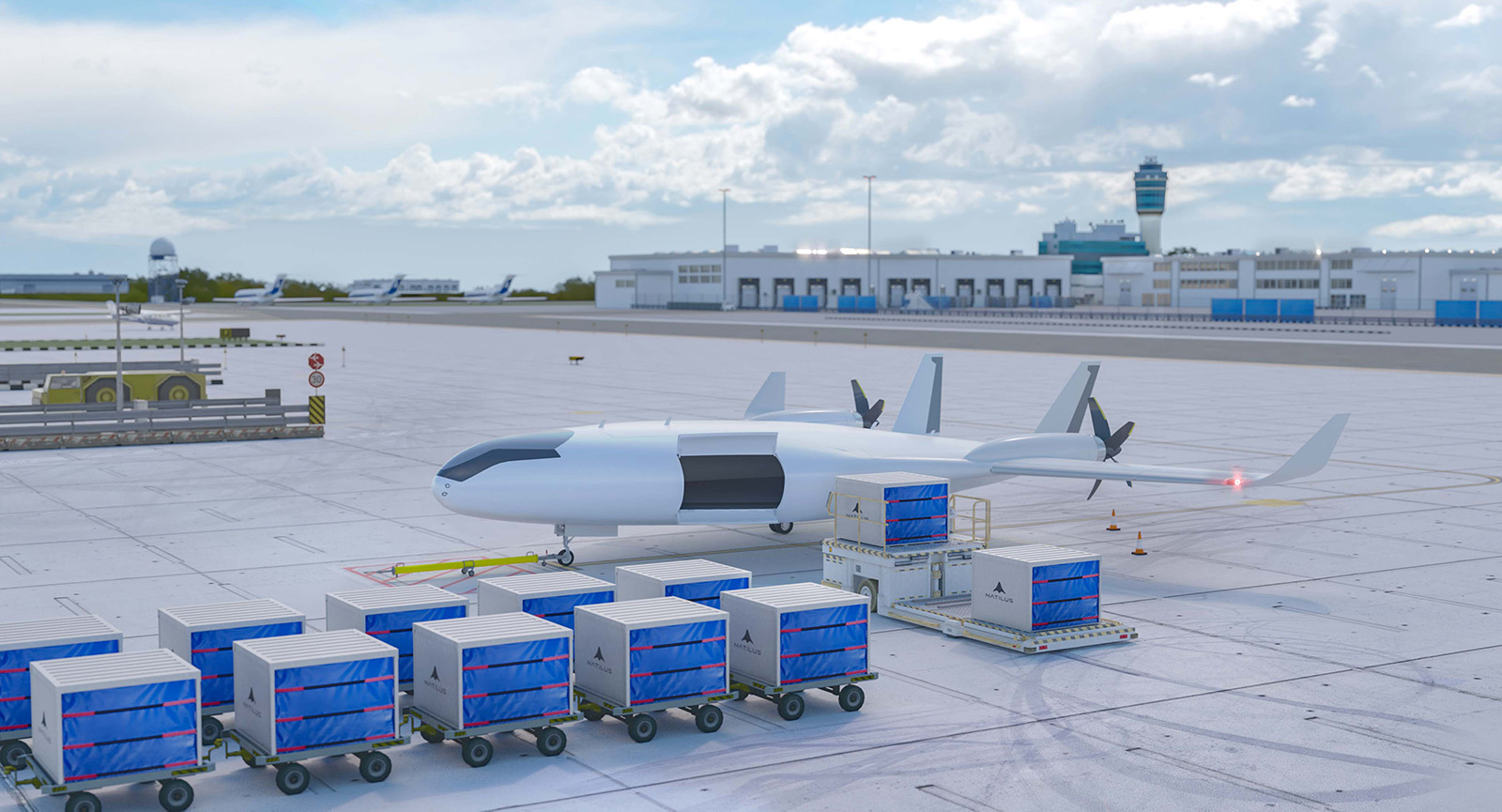Automated Freight Transport Is Transforming Global Logistics

An image of Nautilus's large scale aircraft drone prototype with a wingspan of 30 feet and a cargo capacity of 700 tons.
Photo: Nautilus
Critical automation technology is starting to upend global transportation systems, impacting every stage of the goods flow from a point of origin to a point of consumption.
The COVID-19 pandemic has exposed the vulnerabilities and fragilities of the global supply chain and, at the same time, accelerated the adoption of automated logistics technologies that enable more secure and efficient cargo transportation, as well as contactless delivery.
The way in which technological advances, such as artificial intelligence, machine learning, autonomous control technologies, user interfaces and smart multimodal communication systems are being integrated and complemented with one another is also revealing vulnerabilities across different industry sectors. As they learn the lessons, logistics companies have started applying better project discipline to ensure that investment in automation can help them to remain competitive.
What Do Automated Logistics Look Like?
To cite some of the most recent developments, here’s what the future of automated logistics looks like.
In aerial freight, we are seeing the deployment of drones with an easy-to-use interface for sending and receiving packages 24/7/365, designed to carry payloads of about 4.5 pounds and deliver packages over distances of up to 12.5 miles.
Large-scale aircraft drones, with a wingspan of 30 feet and a cargo capacity of 700 tons, are also being designed for intercontinental cargo delivery services. Large, remotely operated and heavy-lift freight airplane prototypes, powered with turbo-electric propulsion, are being tested for carrying even larger payloads.
For automated freight to reach its full potential, governments and the public will need to be ready for mainstream use, and regulations will need to address data privacy and security concerns.
On the sea, autonomous shipping vessels are being equipped with advanced sensors that allow them to build a detailed picture of their surroundings in real time and with a level of accuracy well beyond that of humans. A combination of sensor fusion and artificial intelligence provides the vessels with object detection and collision avoidance for navigation and automated berthing.
Autonomous freight trains are the third leg of the stool. They are currently operational and being used to deliver iron ore in Western Australia. The locomotive unit is fitted with an onboard module that sends automatic reports on its position, speed and direction of travel to the control center located more than 1,500 km away. The locomotives and all public crossings are also fitted with cameras, allowing for constant monitoring.
Speaking the Same Language
Automated logistics systems are built to achieve high efficiency, which translates into time savings in terms of performance, which, for companies, translates into profit. With a highly efficient system, logistics companies are capable of meeting peak demands. Automated freight, when adopted, can offer increased efficiency in delivery and the lowering of transportation costs.
Automated logistics systems have similar technological capabilities, with some differences in the type of applications to be performed. Any automated vehicle requires a sophisticated control system that makes it move and decides with autonomy using an intricate system (e.g., AI, machine learning, sensors, connectivity). This system will monitor and establish communications with other systems to perform any required task.
Technology in business can have little effect in the long term if other parts of the value chain, such as contract manufacturers, third-party logistics providers, warehousing firms, resellers and retailers, are unable to form partnerships. Automation can help suppliers and retailers to speak the same business language, with both being able to visualize deviations and identify risks early so supply chains can be fine tuned in real time.
A Bumpy Road Ahead
The field of automated freight is still in development. Bringing autonomous vehicles, especially on the road, remains an enormous challenge for companies. For automated freight to reach its full potential, governments and the public will need to be ready for mainstream use, and regulations will need to address data privacy and security concerns. With the responsibility to regulate the future of automated technologies, governments will have to create policies that ensure the safety and functionality of autonomous vehicles, establish protocols that can guarantee that data can be managed safely and securely, and help to gradually integrate the new systems into the existing ones.
There is also a need to consider that goods are transported not only within but also across national boundaries, thus cooperation in the development of international policies could help to address a system with a wide perspective. Finally, technology developers need to provide flawless operational and mechanical safety records that can help to prove that the implementation of technology is not only efficient, but is secure anywhere, so that the public can be assured that the adoption of automated technologies offers more benefits than problems.








